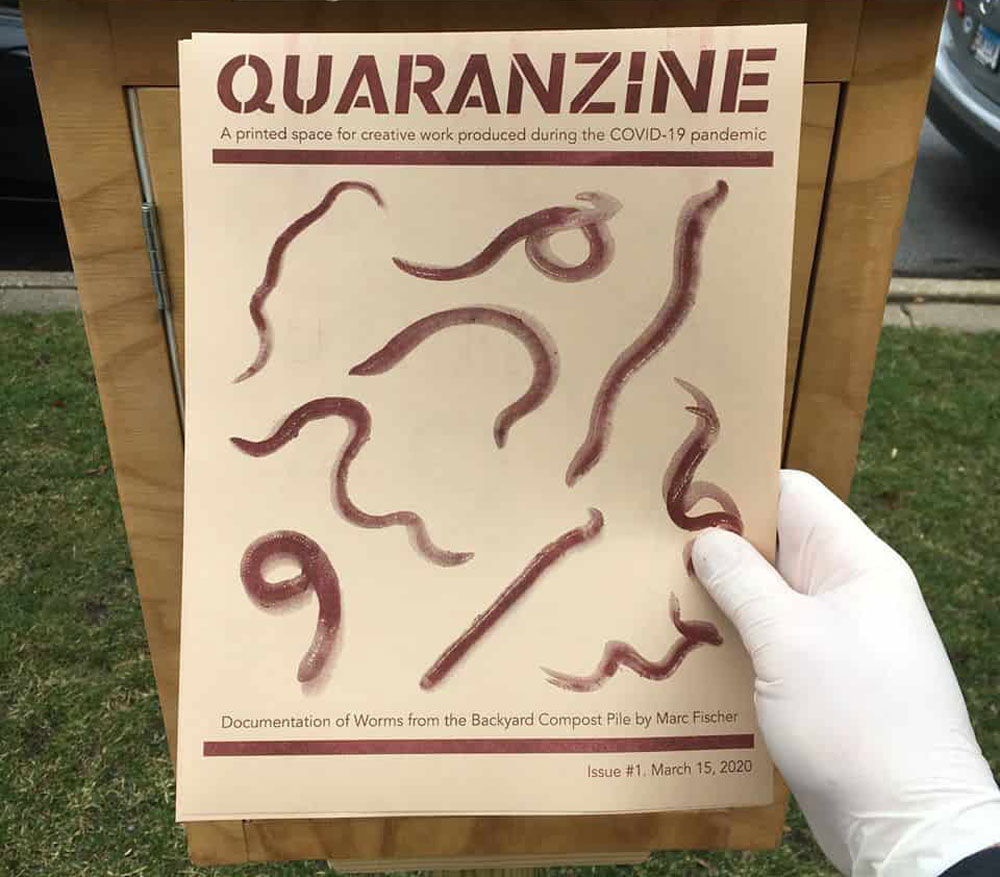
April 30, 2020; Hyperallergic
As Louis Netter writes for The Conversation, “In this time of crisis and isolation, the role of art becomes more central to our lives, whether we realize it or not.”
Artistic expression, specifically zine making, plays a central role in how artists across the globe are using their creativity to encapsulate the many-sided ramifications of the coronavirus pandemic: personal journals, mutual aid explainers, beer bread recipes. These artifacts are being collectively dubbed “quaranzines.”
Speaking with Hyperallergic, Hong Kong-based Zine Coop collective co-founder Beatrix Pang says, “A zine can narrate ephemeral and mundane daily life experiences, and also deliver important messages and advocate for individual or collective freedom.”
Pang focuses on the proliferation of pandemic zines in Hong Kong. The medium was used to great effect there during the recent political protests, but the movement is seeing international momentum on both an individual and organizational scale. London’s Bitter Melon is sharing contributions to its “Stay Home Diary” from Asian-identifying writers and artists. Submissions are being solicited in Scotland and Cambodia for quaranzine projects. In Flagstaff, Arizona, Indigenous Action is providing for the health and safety of unsheltered refugees and displaced Indigenous people with how-to zines on building emergency handwashing stations.
Zines have a rich history in independent, do-it-yourself philosophy and culture. Often published in limited quantities using photocopiers and/or handmade techniques, zines regularly eschew traditional publishing norms while emphasizing self-expression over profit. The lack of formal structure allows zine makers to delve deep into an array of diverse topics and subcultures. They also provide a means for marginalized communities to tell their stories in their own voices.
Sign up for our free newsletters
Subscribe to NPQ's newsletters to have our top stories delivered directly to your inbox.
By signing up, you agree to our privacy policy and terms of use, and to receive messages from NPQ and our partners.
Take Asian American Feminist Antibodies, for example. Produced by the Asian American Feminist Collective and Bluestockings, a collectively-owned bookstore in New York City, the zine illustrates the complexity these creative endeavors can exhibit while maintaining a level of general accessibility. Matilda Sabal of Bluestockings describes Feminist Antibodies:
In starting the zine with the history of public health and xenophobia and the snapshot of our administration’s early failures, we wanted to remind people that the medical abuse, neglect, and lethal mismanagement of the coronavirus epidemic at the hands of the US government is not a unique phenomenon, but rather, another deadly piece of a brutal and remorseless legacy of how the state has failed us.
Even with arts funding dwindling as the pandemic continues and economies seize, creators are using outlets like zines, comics, and street art to communicate shared experiences with audiences sequestered at home, often for free. It’s a response with which nonprofits should be familiar; DIY attitudes and scrappy, against the odds mentalities have buoyed many programs operating on razor-thin margins for years. Arts and cultural nonprofits are already adapting to new realities. And while the zine approach to sustainability might prove a worthy short-term strategy with enough community support, artists and art organizations are at least seeing some financial investment from funding coalitions.
Writing for BuzzFeed News, Rosie Knight recognizes that “zines are a way of disseminating information and narratives that mainstream channels have rejected. They are a space for communities to come together to record and share their own stories, whether they’re about family, politics, culture, or anything in between.” Now, that includes the 2020 global health crisis.
Interested in learning more about quaranzines or how to make your own? Hyperallergic has collected a handful of resources on the subject. Who knows, maybe your next donation appeal will go out in the form of a photocopied pamphlet.—Drew Adams













